A new season of Birding in Suriname - Please join me on my birding adventures to spot as many birds as possible. Season 2 episode 1
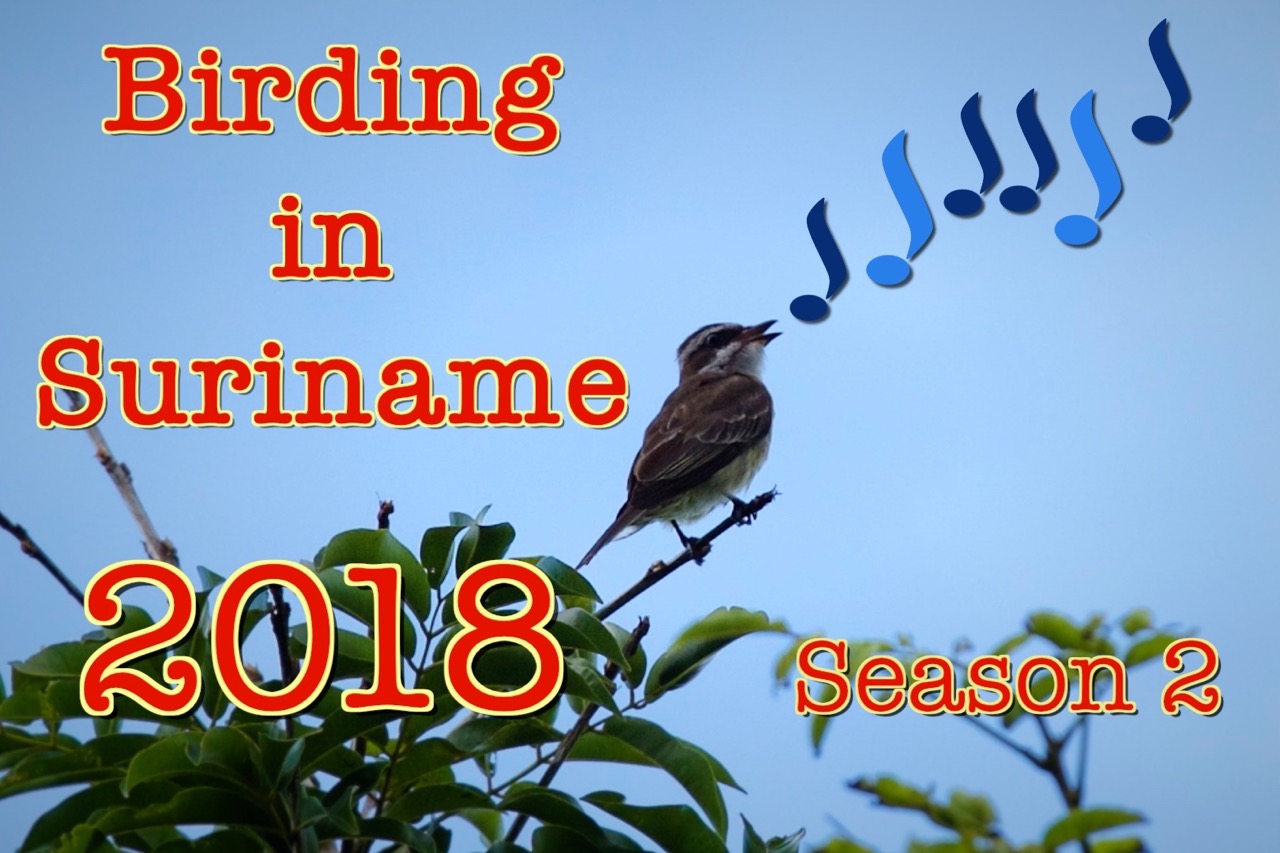
Welcome to season 2 of Birding in Suriname. Last year I shared more than 50 birds here on Steemit. This year I hope that I can share even more. 2018 started well. I spotted a couple more species and Steem rose to new heights. I hope that you will join me this year on my birding adventures.
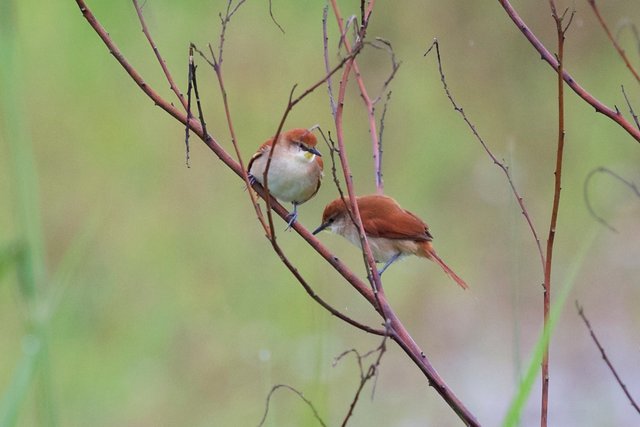
Yellow-chinned Spinetail (Certhiaxis cinnamomea)
Identifying birds can be fun but it can also be very difficult. When I first spotted the bird(s) in the picture above I had no idea what it was. So I asked the Steemit community and it was @ecoinstant who helped me out. The Yellow-chinned Spinetail is not a common bird in our garden. But recently there were three of them, a mother and her two young. They hung around for a couple of days but they expanded their habitat and now I see them less.
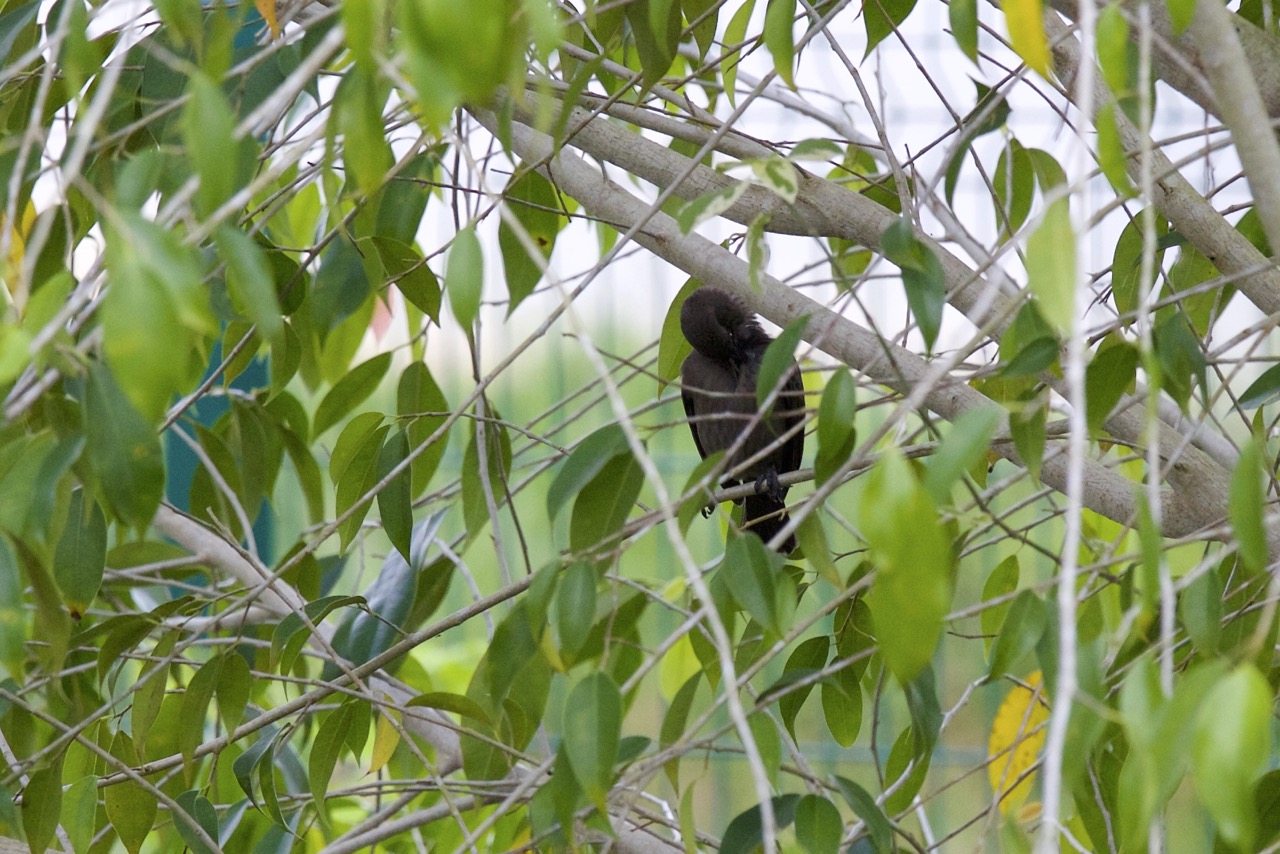
Screaming Piha (Lipaugus vociferans)
I spotted a very uncommon bird last week. It is not rare but normally it lives in the interior. The Screaming Piha is number 62 on my list of spotted birds. The picture is not that great but good enough to identify it.
The bird thanks its name to the fact that it is indeed screaming constantly. They can be heard everywhere in the rainforest of Suriname. They shout for a reason. Males have their own small territory and they sing (scream) to attract a female to mate. Apparently they eat fruit.
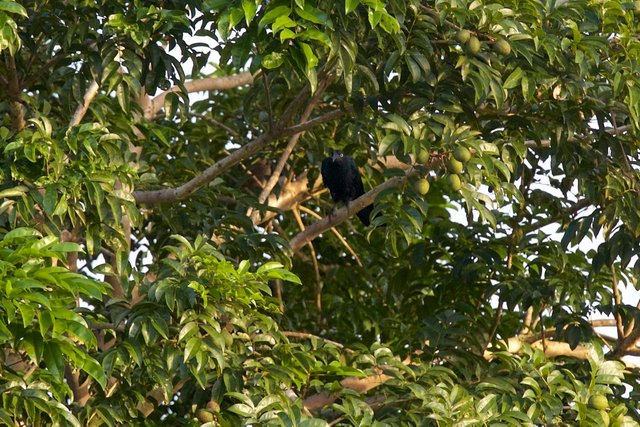
Greater Ani (Crotophaga major)
Number 63 on the list is the Greater Ani. It landed in a tree quit far away and the other birds were not amused. It was chased away before I could get a bit closer to take a better picture. Normally you see them in groups. I've seen them once before but I didn't had my camera with me.
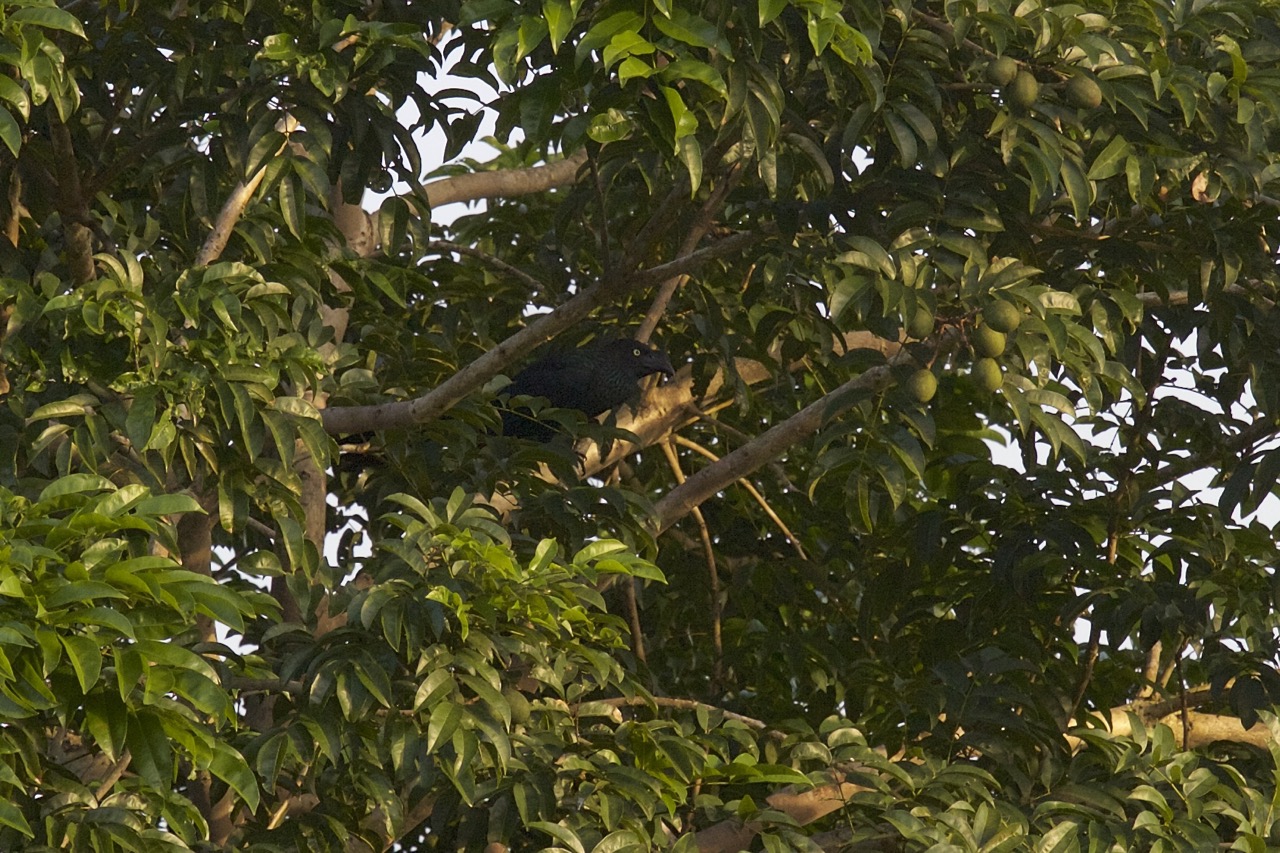
They are way less common than its cousin the Smooth-billed Ani. As the name suggests it's bigger and has light yellow eyes. It feeds mainly on insects but it also eats lizards and even frogs.


This young female is ready to mate. She's building a nest for herself. But what is it? As mentioned before identifying birds can be tricky. So I decided to do a little birding challenge. The following picture shows 8 birds. There are 5 different species. With two of these species, the male and female look the same. But for the other three, the females are quite different in appearance than their male partners. Are you able to match them and positively identify them? The answer will be in the comment section.
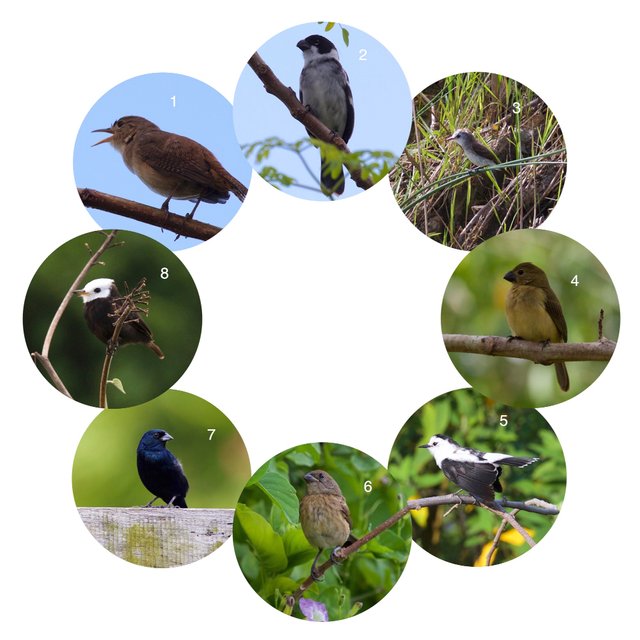
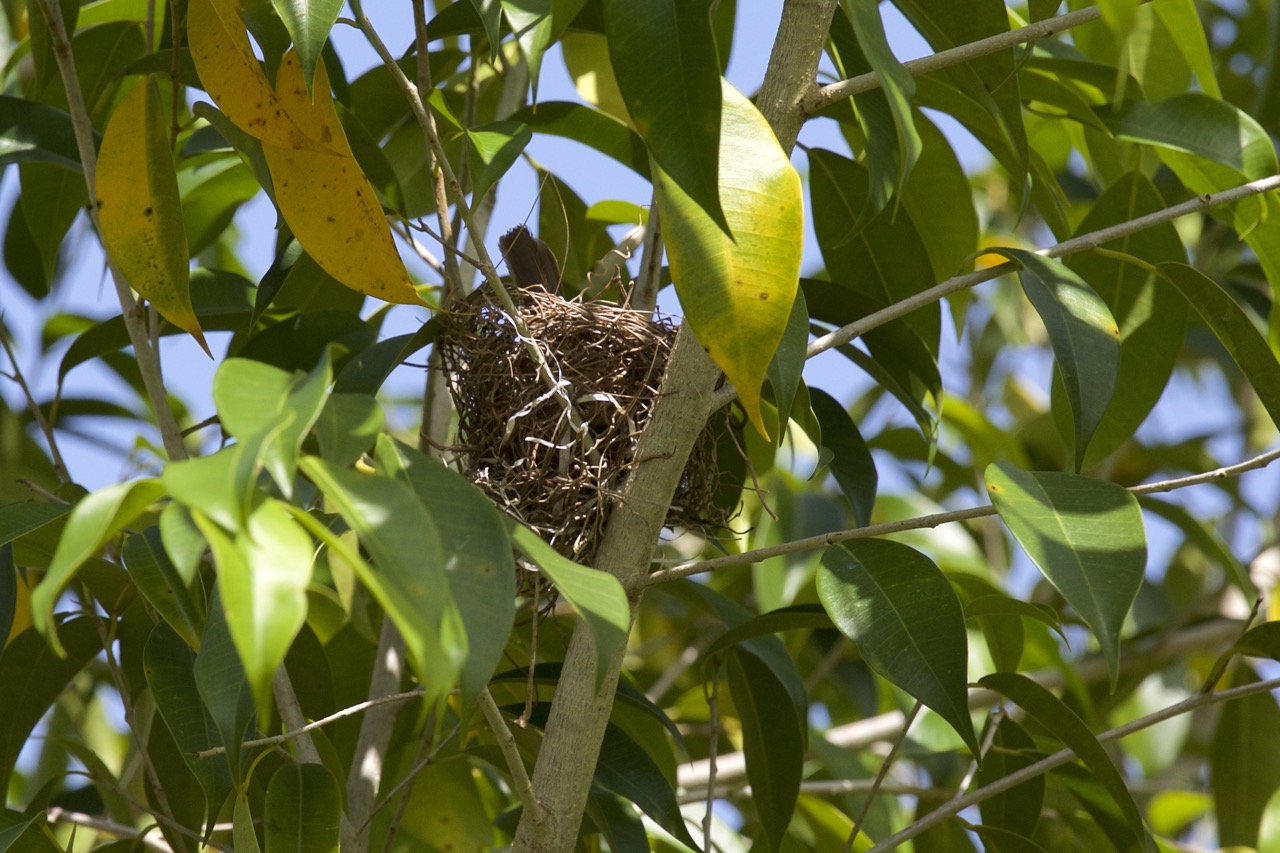
Her nest is now finished and she's sitting on it. I assume she laid some eggs but the nest is too high up in the tree so I have to be patient to see if she will have chicks in the future.

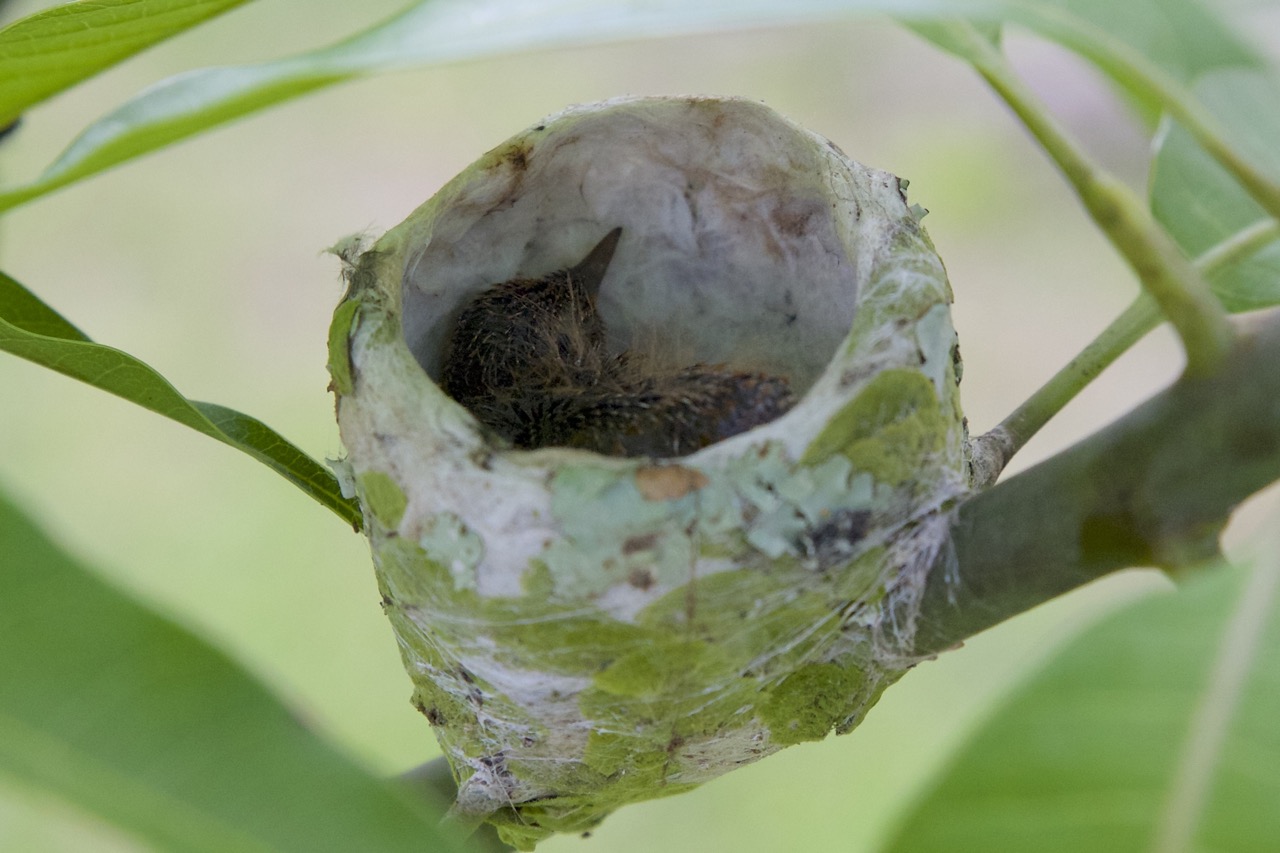
The young of the Glittering-throated Emerald is doing fine. (It's a hummingbird.) The mother stays away from the nest longer and longer to find enough insects to feed her young. In a couple of days the young will fletch. It will be very interesting to see (and film) when it starts learning to fly.
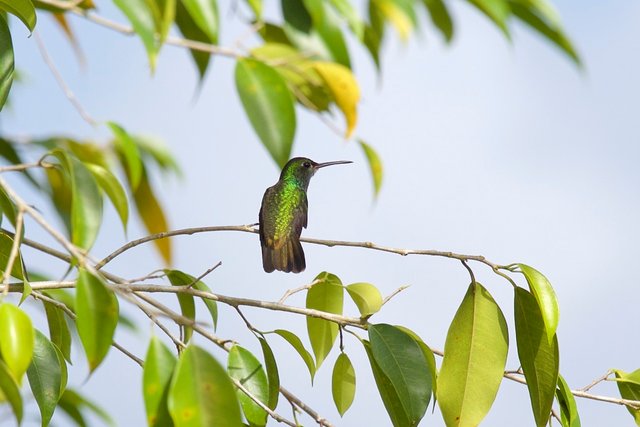
Here is the mother on the lookout for more insects. Bird names are not very original. It's easy to understand why it's called an emerald. She's ever so brave. Ferociously attacking other birds that come too close to the nest. Yesterday she attacked a tropical mockingbird. This bird is about 10 times as big as she is. Guess who won?
Here is a short video of her feeding her young. You don't see the young, it's too deep in the nest.
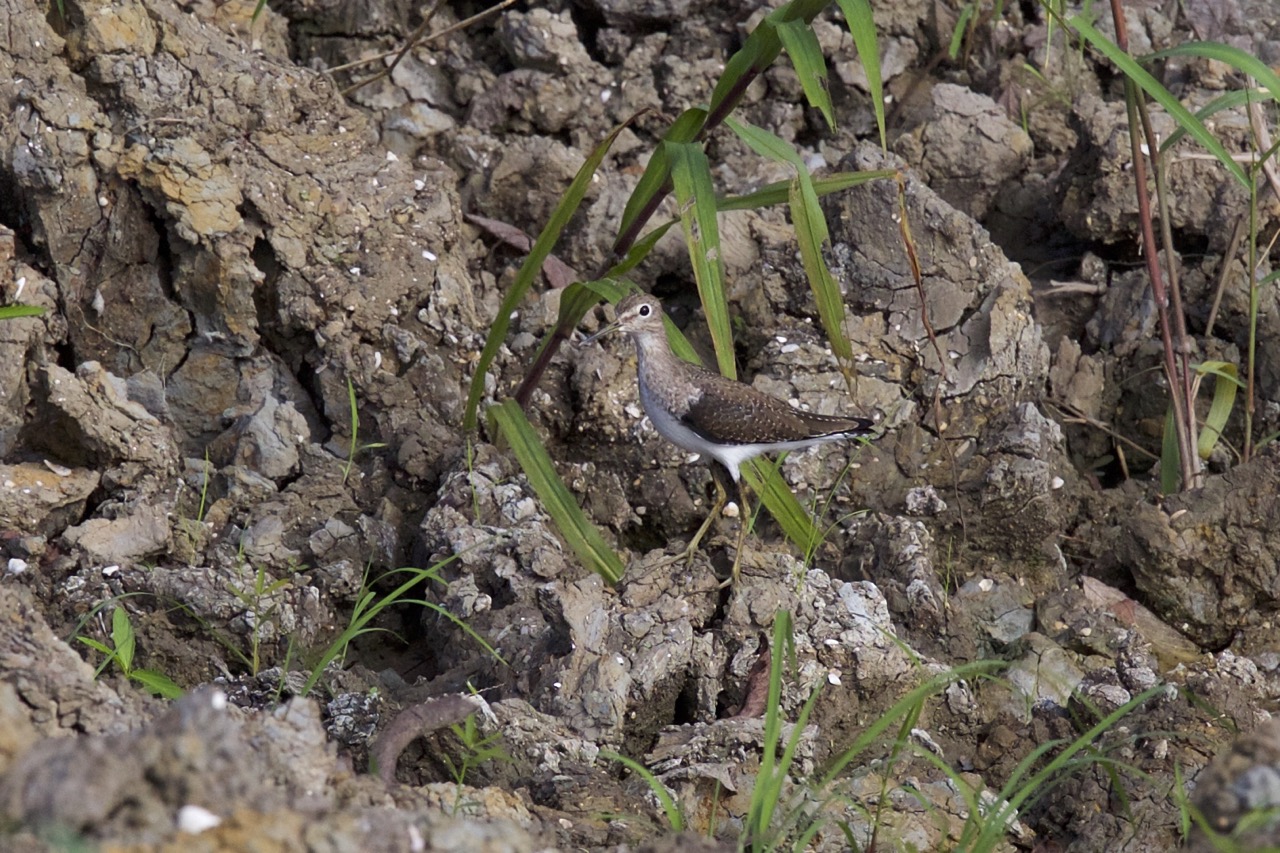
Spotted Sandpiper (Actitis macularius)
Sandpipers are one the most difficult birds to identify. There are 25 different species in Suriname and they all look the same more or less. Then their plumage can change as well, making it even more difficult. This Spotted Sandpiper without spots is in its non-breeding plumage. This shore bird can be found everywhere near water even in the middle of the forest. The spotted sandpiper is a migrating bird from North America. Most of them spend the winter south of Suriname. They can migrate all the way from Canada to Argentina.
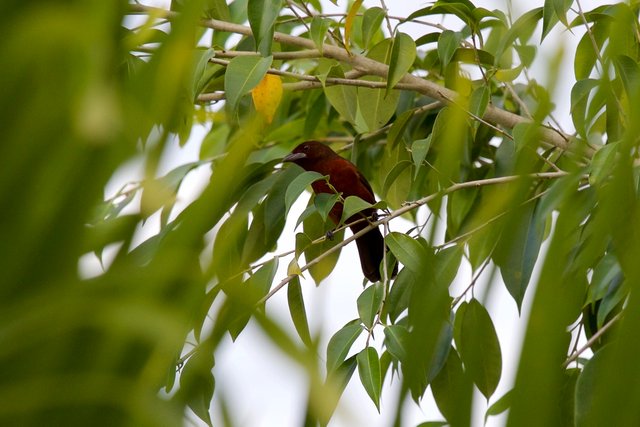
Silver-beaked Tanager (Ramphocelus carbo)
As I said bird names are not original. But that makes them easy to remember. This beautiful bird is a Silver-beaked Tanager. It's very shy and I don't see them often, especially not in our garden.
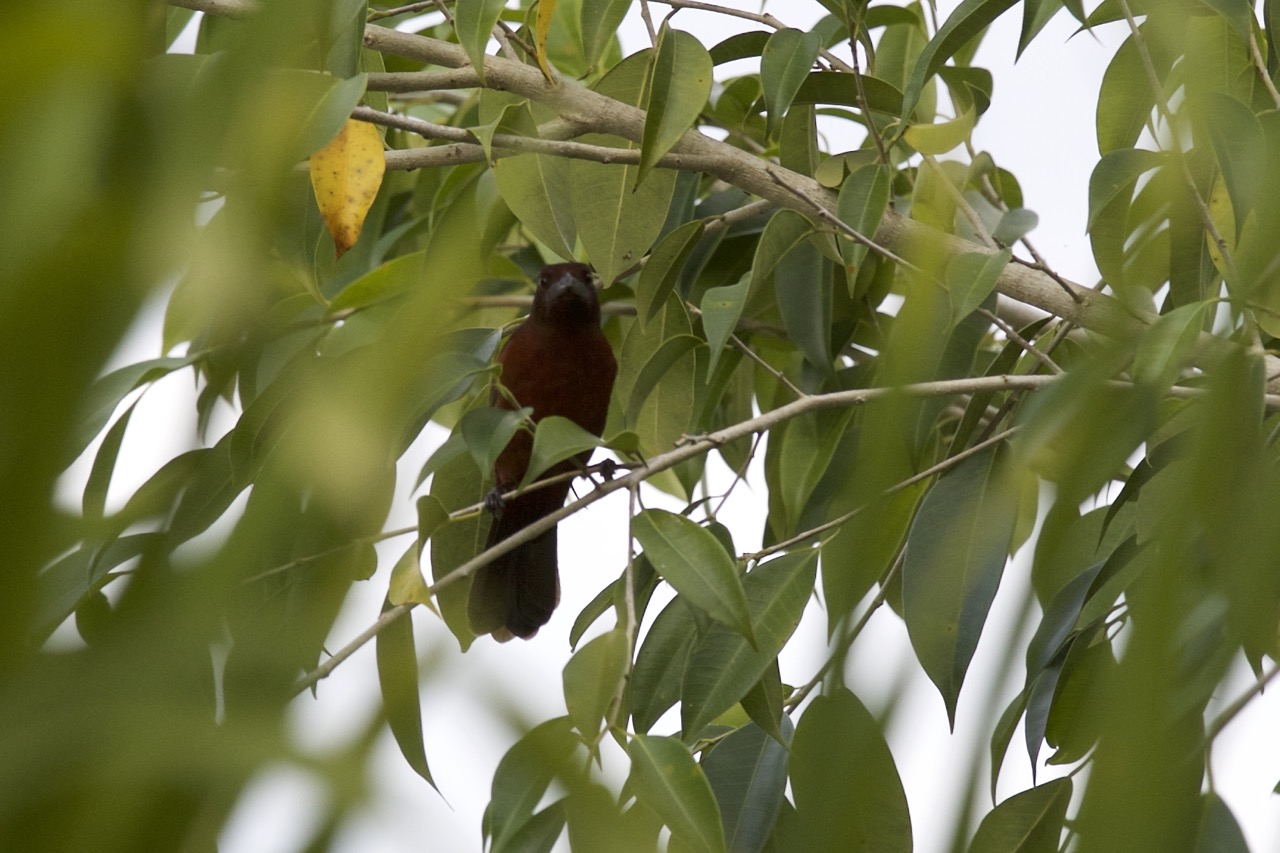
They, like all the other tanagers, love to eat fruit but they also eat insects. They are sociable birds that can often been seen in small groups. The female is less conspicuously red. So I think this is a male but I'm not 100% sure.
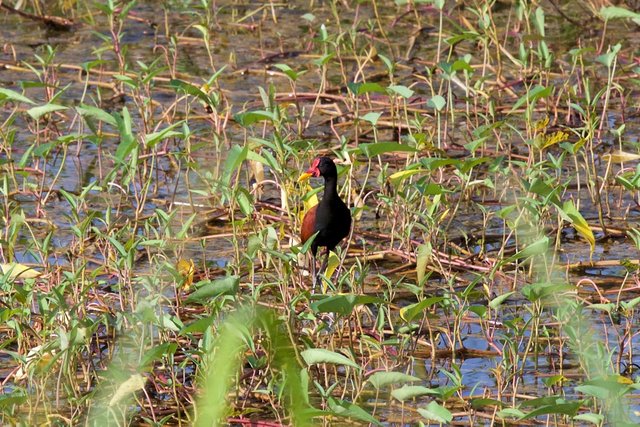
Wattled Jacana (Jacana jacana)
I will end this post with a bird that is very easy to identify. The Wattled Jacana is a waterbird that lives in small groups. They are very shy and it's almost impossible to approach them. They walk over the vegetation in the water, that's why they have these long toes. They build their nest on the water as well. It's made out of sticks and grasses and looks quite messy. These birds can be really noisy especially when they fight. They have a sharp nail at the back of their feet and they fight like cocks in a ring fight.
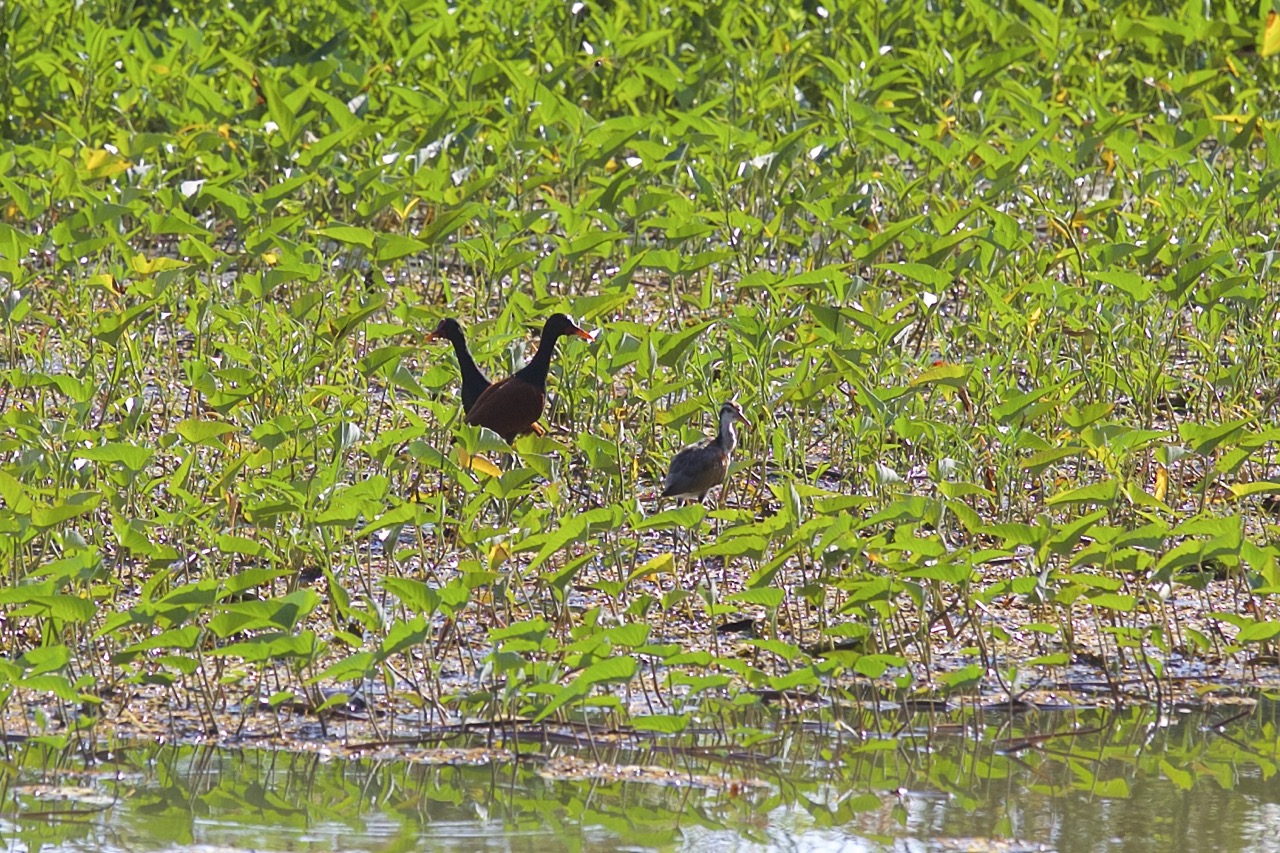
Here we see two parents with their young. The young has some white on it's belly. It also has stripes on both sides of its head. It has very long toes just like its parents.
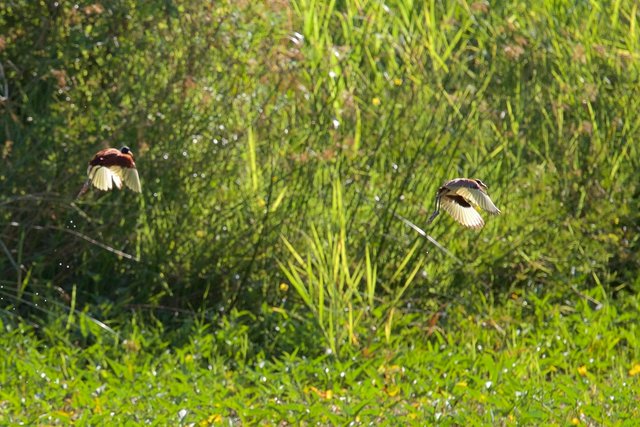
But get a little too close and they will fly off screaming.

Next week there will more birds from Suriname and hopefully I can show you some footage of the baby hummingbird learning to fly.
Much Love,
Gardenbsquared
Why not click here to read more inspirational and interesting posts by the other members of the ecoTrain.


Not always commenting but i always enjoy looking at your amazing pictures @gardenbsquared
Thank you @bubke, I always enjoy taking and sharing them.
Wow, great shots! Hello fellow eco-train passenger! Following!
Thank you @schoonercreek. Welcome to the ecoTrain. Followed.
Some really amazing pictures and birds. The screaming piha is a very uncommon bird where you are located in the coastal zone of Suriname, it is a typical bird for the pristine rainforest. And has an amazing call. I am not much of a birder, but I am sure I am going to learn to recognize more birds as I follow your posts.
Wow finally I meet somebody that I can talk to. It's indeed very uncommon and I hope I identified it correctly. I'm not much of a birder myself but love watching them. Thank you for following my posts.
wow gorgeous shots. i love the circle of the birds with the numbers to guess next to it. and how fantastic is the Glittering-throated Emerald and it's perfect nest. I go by the name wren so i always feel such an affinity with them.... just got on ecotrain as well so happy to be connected here :)!!
Welcome fellow passenger. Thank you for your kind words.
The answer to the question; can you match the males with the females: